Two stiff non conducting rods have length L each and have small balls connected to their ends. The rods are placed parallel to each other and the balls are connected by two identical springs as shown. When each ball is given a charge q, the system stays in equilibrium when it is in the shape of a square. If natural relaxed length of each spring is L/2 find the force constant (k) for them.
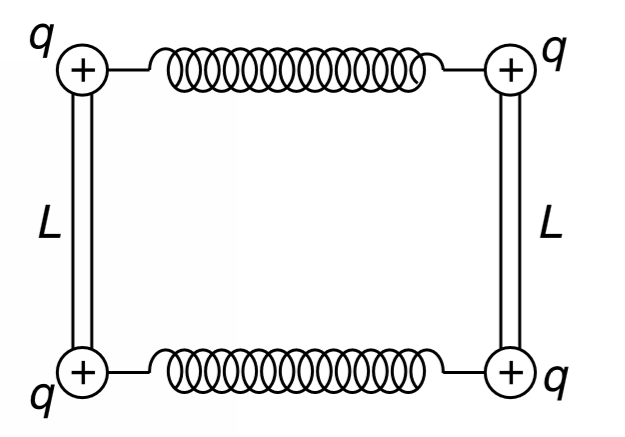
The correct Answer is:∴k=q24π∈0L3(2√2+1√2)
Step by step video, text & image solution for Two stiff non conducting rods have length L each and have small balls connected to their ends. The rods are placed parallel to each other and the balls are connected by two identical springs as shown. When each ball is given a charge q, the system stays in equilibrium when it is in the shape of a square. If natural relaxed length of each spring is L/2 find the force constant (k) for them. by Physics experts to help you in doubts & scoring excellent marks in Class 12 exams.
Updated on:21/07/2023Topper's Solved these Questions
- ELECTROSTATICSBOOK - ARIHANTCHAPTER - ELECTROSTATICSEXERCISE - Level 2
77 Videos
- ELECTROSTATICSBOOK - ARIHANTCHAPTER - ELECTROSTATICSEXERCISE - Level 3
59 Videos
- ELECTROMAGNETIC INDUCTIONBOOK - ARIHANTCHAPTER - ELECTROMAGNETIC INDUCTIONEXERCISE - Level 3
12 Videos
- GEOMETRICAL OPTICSBOOK - ARIHANTCHAPTER - GEOMETRICAL OPTICSEXERCISE - Level 3
9 Videos
Similar Questions

A rod of mass m and length l is connected by two spring of spring constants k1andk2, so that it is horizontal at equilibrium. What is the natural frequency of the system?
View SolutionThe ball strikes the block and sticks to it. Find the maximum compression of spring. (L: natural length of spring)

View Solution
Knowledge Check
Two identical thin uniform rods of length L each are joined to form T shape as shown in the figure. The distance of centre of mass from D is
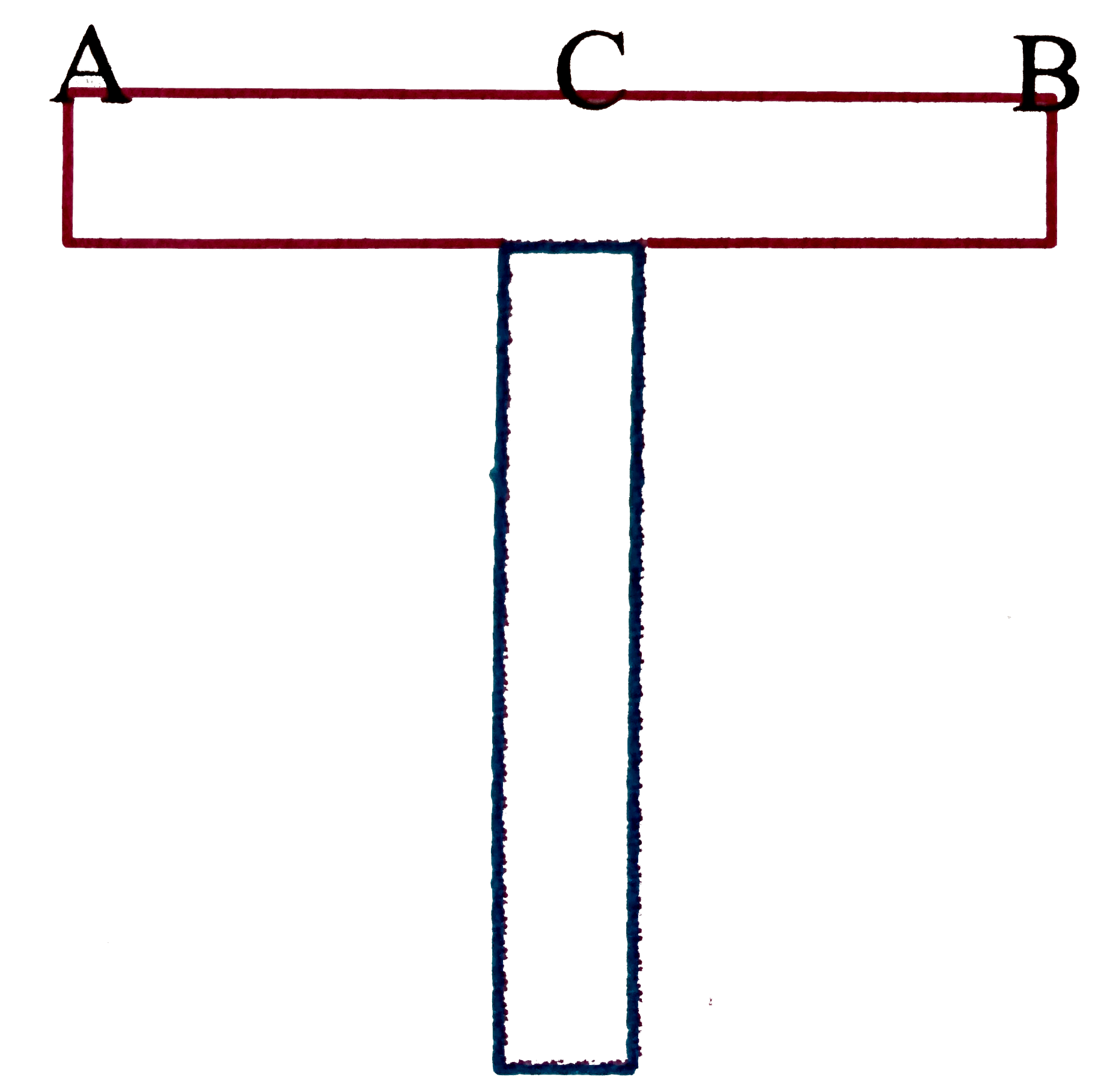 A0BL/4C3L/4DL
A0BL/4C3L/4DLTwo charged capacitors have their outer plates fixed and inner plates connected by a spring of force constant 'K'. The charge on each capacitor is q. find the extension in the spring at equilibrium
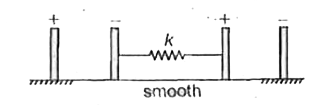 Aq22Aε0KBq24Aε0KCq2Aε0KDzero
Aq22Aε0KBq24Aε0KCq2Aε0KDzeroA horizontal metallic rod of mass 'm' and length 'l' is supported by two vertical identical springs of spring constant 'K' each and natural length l0. A current 'i is flowing the the rod in the direction shown. If the rod is in equilibrium, then the lengthof each spring in this state is:
 Alo+ilB−mgKBlo+ilB−mg2KClo+mg−ilB2KDlo+mg−ilBK
Alo+ilB−mgKBlo+ilB−mg2KClo+mg−ilB2KDlo+mg−ilBK
A horizontal metallic rod of mass m and length l is supported by two vertical identical springs of spring constant k each and natral length i0 A current l is flowing in the rod in the direction shown if the rod is in equilibrium then the length of each spring in this state is:
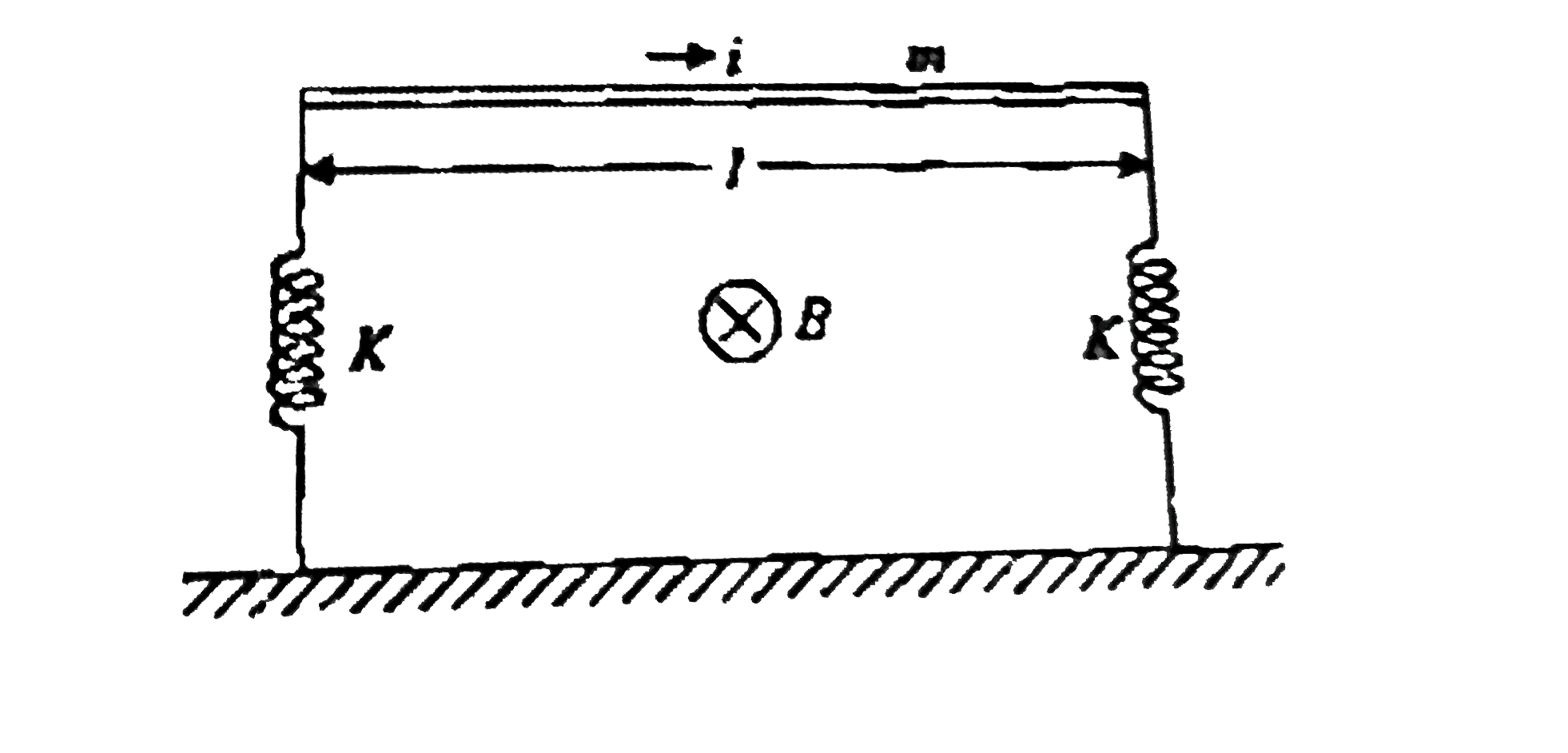
View SolutionTwo indentical pith balls, each carrying charge q, are suspended from a common point by two strings of equal length l. Find the mass of each ball if the angle between the strings is 2θ in equilibrium.
View SolutionTwo identical rods each of mass m and length are connected as shown. Locate c.m.
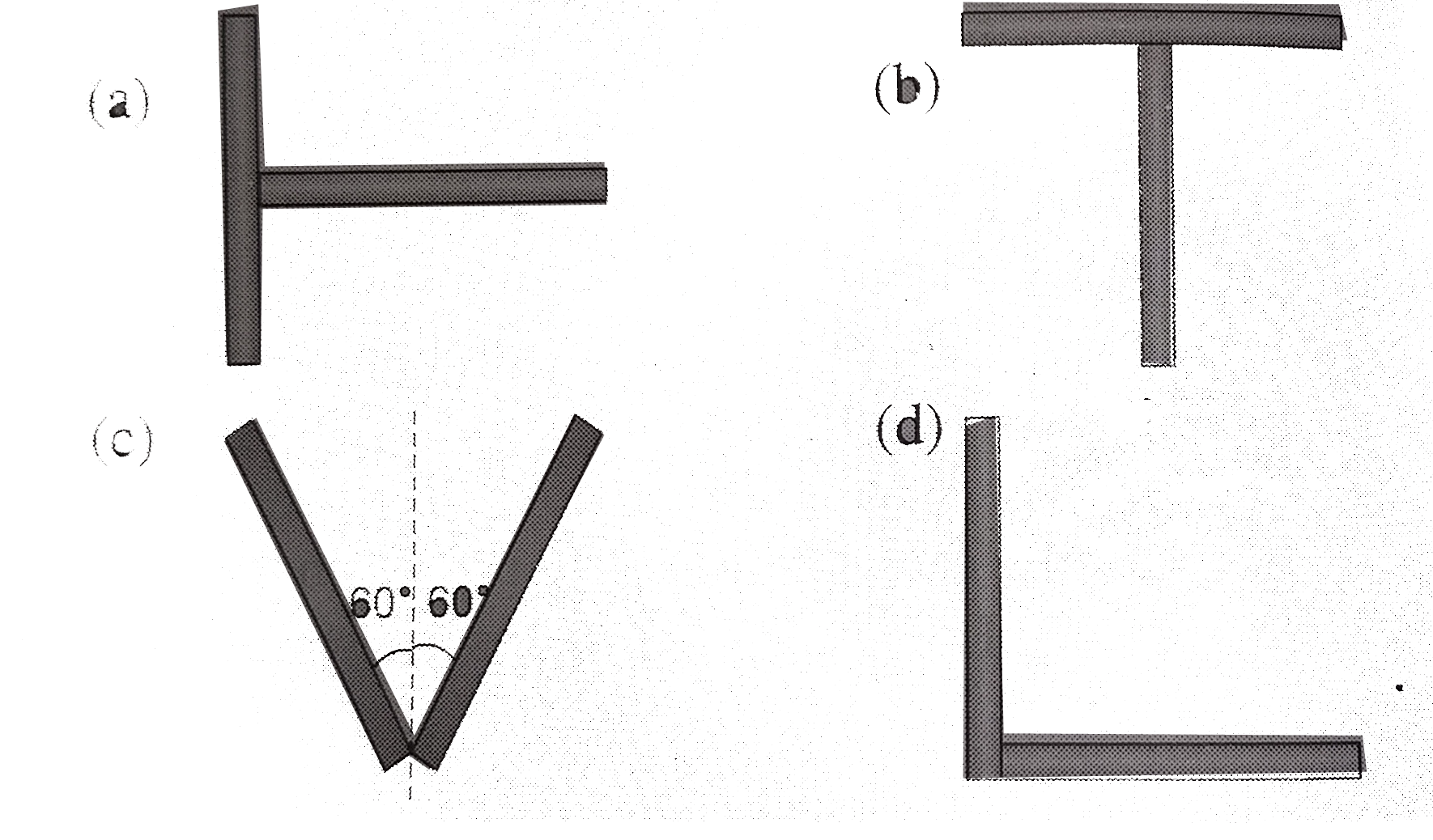
View SolutionTwo identical particles each of mass m are connected by a light spring of stiffness K. The initial deformation of the spring when the system was at rest, x0. After releasing the system, if one of the particles has a speed v and the deformation of the spring is x, find the speed of the other particle neglecting friction.
View SolutionA spring of free length 15 cm is connected to the two masses as shown in the figure −4.149 and compressed 5 cm. The system is released on a smooth horizonal surface. Find the speed of each block when the spring is again at its free length. The force constant for spring is 2100Nm1

View Solution
